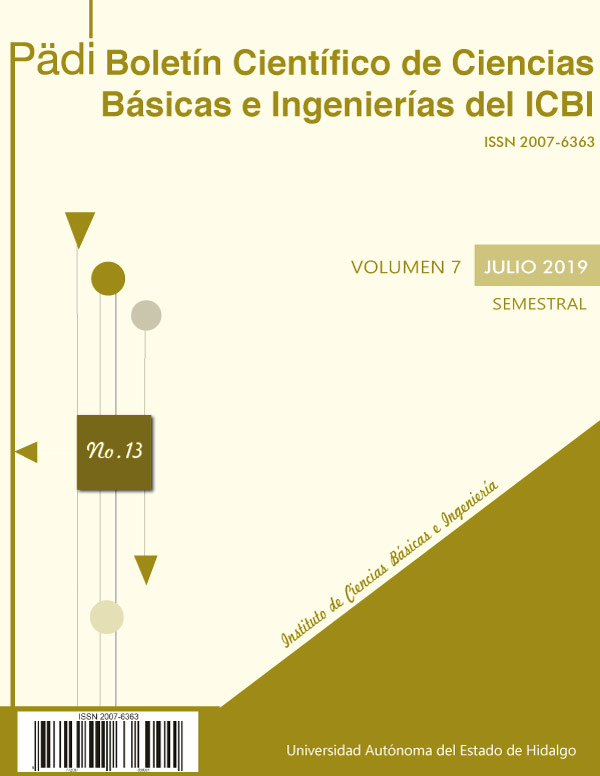Pattern Recognition System for Faces in the Cloud
DOI:
https://doi.org/10.29057/icbi.v7i13.3540Keywords:
identification and comparison of faces, recognition of emotions, recognition services of faces in the cloud, biometric systems, RecognitionAbstract
This article consists in implementing a Cloud-based service that provides the most advanced face recognition and detection algorithms with attributes under the Microsoft Azure platform. For its implementation, in the state of the art, biometric techniques used today for the recognition of facial patterns are analyzed and a general approach is to consider the existence of noise in the images to be analyzed when comparing them with the databases considering the alignment, normalization and scaling of each of the images tested with this service. With regard to the implementation of these services, differentiated experiments have been carried out in each of the phases of the project development, so that their strengths and weaknesses in the Cloud service can be evaluated. The analysis of the processed images has focused on observing the accuracy potential, efficiency and speed of the service in the Cloud. In addition, it was necessary to carry out an anthropometric study as an experimental basis to test the service and thus carry out a more thorough analysis of the face, considering in the project the following main functions: the detection of faces with attributes and facial recognition. The development of the project has two main lines of work: in the first line a service was implemented based on the libraries of the Face API of Microsoft Azure for facial recognition in C # whose performance was evaluated with a local database and later in the Cloud from Microsoft, the design and implementation was later adapted and improved for its real-time operation, the second line of work has an experimental approach, carrying out differentiated tests of the service in each of the development stages, where it was possible to carry out an evaluation in detail. The experiments focused on the study of the most relevant stages for the analysis of accuracy, performance and speed in the functions of: grouping, detection, checking, identification and comparison of faces and recognition of emotions.
Downloads
Publication Facts
Reviewer profiles N/A
Author statements
Indexed in
- Academic society
- N/A
References
A. Nabatchian, E. Abdel-Raheem, and M. Ahmadi. Human face recognition using different moment invariants: A comparative study. In Image and Signal Processing, 2008. CISP '08. Congress on, volume 3, pages 661-666, 2008.
Amazon . (2018). Amazon Web Services. 11/Oct/2018, de Amazon Sitio web: https://aws.amazon.com/es/rekognition/.
Corinna Cortes and Vladimir Vapnik. Support-vector networks. Mach. Learn., 20(3):273 297, September 1995.
Ferdinando Samaria and Steve Young. Hmm-based architecture for face identification. Image and Vision Computing, 12(8):537 - 543, 1994.
Gary Bradski and Adrian Kaehler. Learning OpenCV. O'Reilly Media Inc., 2008.
Google. (2018). Google Cloud Vision. 11/Oct/2018, de Google Sitio web: https://cloud.google.com/vision/.
I.T. Jolliffe. Principal Component Analysis. Springer Verlag, 1986.
Ingemar J. Cox, J. Ghosn, and P.N. Yianilos. Feature-based face recognition using mixturedistance. In Computer Vision and Pattern Recognition, 1996. Proceedings CVPR '96, 1996 IEEE Computer Society Conference on, pages 209-216, 1996.
ISO/IEC 19794-5:2011. Information technology - biometric data interchange formats - part 5: Face image data. In International Organization for Standardization, 2011.
John C. Russ. Image Processing Handbook, Fourth Edition. CRC Press, Inc., Boca Raton, FL, USA, 4th edition, 2002.
Laurenz Wiskott, Jean-Marc Fellous, Norbert Krüger, and Christoph Von Der Malsburg. Face recognition by elastic bunch graph matching. IEEE TRANSACTIONS ON PATTERN NALYSIS AND MACHINE INTELLIGENCE, 19:775-779, 1997.
Microsoft Azure . (2018). Computer Vision. 11/Oct/2018, de Microsoft Sitio web: https://azure.microsoft.com/en-us/services/cognitive-services/computer-vision/.
Nobuyuki Otsu. A Threshold Selection Method from Gray-level Histograms. IEEE Transactions on Systems, Man and Cybernetics, 9(1):6266, 1979.
P. Parveen and Bhavani Thuraisingham. Face recognition using multiple classifiers. In Tools with Artificial Intelligence, 2006. ICTAI '06. 18th IEEE International Conference on, pages 179186, 2006.
P. Viola and M. Jones. Rapid object detection using a boosted cascade of simple features. In Computer Vision and Pattern Recognition, 2001. CVPR 2001. Proceedings of the 2001 IEEE Computer Society Conference on, volume 1, pages I-511 I-518 vol.1, 2001.
P.N. Belhumeur, J.P. Hespanha, and D. Kriegman. Eigenfaces vs. fisherfaces: recognition using class specific linear projection. Pattern Analysis and Machine Intelligence, IEEE Transactions on, 19(7):711-720, 1997.
Paul Viola and Michael Jones. Robust real-time face detection. International Journal of Computer Vision, 57:137154, 2004.
Philipp Wagner. Local binary patterns in opencv. http://www.bytefish.de/blog/local_ binary_patterns/, November 2011.
Philipp Wagner. Machine learning with opencv2. www.bytefish.de, February 2012.
Phillip Ian Wilson and Dr. John Fernandez. Facial feature detection using haar classifiers. Journal of Computing Sciences in Colleges, pages 127-133, 2006.
R. Lienhart and J. Maydt. An extended set of haar-like features for rapid object detection. In Image Processing. 2002. Proceedings. 2002 International Conference on, volume 1, pages I900I903 vol.1, 2002.
Sergios Theodoridis and Konstantinos Koutroumbas. Pattern Recognition, Fourth Edition. Academic Press, 4th edition, 2008.
Timo Ahonen, Abdenour Hadid, and Matti Pietikainen. Face description with local binary patterns: Application to face recognition. IEEE Trans. Pattern Anal. Mach. Intell., 28(12):2037-2041, December 2006.
Timo Ahonen, Abdenour Hadid, and Matti Pietikainen. Face recognition with local binary patterns. In Tomás Pajdla and Jirí Matas, editors, Computer Vision - ECCV 2004, volume 3021 of Lecture Notes in Computer Science, chapter 36, pages 469-481. Springer Berlin Heidelberg, Berlin, Heidelberg, 2004.
U. Raghavendra, P.K. Mahesh, and Anjan Gudigar. A novel face recognition method using pca, lda and support vector machine. In Natarajan Meghanathan, Nabendu Chaki, and Dhinaharan Nagamalai, editors, Advances in Computer Science and Information Technology. Computer Science and Engineering, volume 85 of Lecture Notes of the Institute for Computer Sciences, Social Informatics and Telecommunications Engineering, pages 241 249. Springer Berlin Heidelberg, 2012.
Ziad M. Hafed and Martin D. Levine. Face recognition using the discrete cosine transform. Int. J. Comput. Vision, 43(3):167-188, July 2001.




















